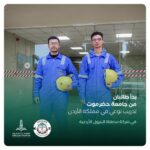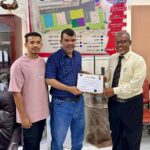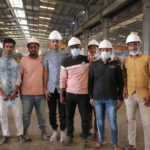About Faculty
The College of Engineering & Petroleum (CEP) was established as the first college in Hadhramout University in the second semester of the academic year 1995 / 1996. It was officially opened in February 8th , 1996. There were three specializations of approximately 100 students, the Department of Chemical and Petroleum Engineering, the Department of Architecture and Environmental planning, and the Department of Computer Sciences, after some renovations were made to the College building in Fuwah. The Department of Electronic Engineering and Communication of approximately 46 students was added in 1996 / 1997 with assistance of the British Council with two laboratories in electronics and communications. The total number of students were 146 male and female students. With the assistance of a number of elite Yemeni and non-Yemeni members of the Faculty from Sudanese, Iraqi, Libyan, Algerian, and Egyptian universities, the teaching process stabilized.
In 2005 / 2006, new specializations in the field of engineering, such as computer engineering instead of computer sciences, and civil engineering, in addition to the previous specializations were opened after the College was transferred from the colleges complex to the new university city in Fluk. The College labs were equipped with modern and advanced equipment.
In 2010, the College had the support of the World Bank on the file of Chemical Engineering Department in support of programs of accreditation and academic quality in public Yemeni universities. This program will be generalized on the other departments of the College when it succeeds for quality and development, so as CEP is able to obtain academic accreditation at the national and international levels.
The College was built at its recent place with full government approval and funding from the Islamic Bank. Most of its buildings were equipped and furnished by government funding. However, the civil society bodies, civil committees, and Yemeni businessmen have had honorable roles and positions since the establishment, including:
- Hadhramout Chamber of Commerce and Industry.
- General Establishment for Construction / Hadhramout Branch.
- Civil Committees for donation at home and abroad.
- Hadhramout Charity Association in Sana’a and Aden.
The College has become the home of many students, as it currently includes approximately 2500 students in various fields. However, as an inevitable result and prerequisite for obtaining the academic accreditation, it becomes necessary to carry out a self-assessment study of the College academic program according to standards and procedures that help to analyze the current condition of the College as well as to identify the strengths and weaknesses in order to put the future strategic plans for the development of the College. In this regard, we would like to thank Hadhramout Foundation for Development and the Board of Trustees at HU for their sense of the importance of developing the performance of CEP.
Vision
Mission
Objectives
- To prepare and qualify specialized engineers in the fields of engineering and technology.
- To provide the students with knowledge assets in basic science and engineering and the integration of theoretical and applied sciences.
- To found a scientific environment suitable for academic engineering work to cope with the modern era and face its challenges.
- To provide the students with the skills of preparing research and professional reports, communication skills and dealing professionally at work sites.
- To hold partnerships with working oil companies at the local level, centers of vernacular architecture, public bodies and related institutions to contribute to the development of natural resources, preservation of architectural heritage, and achieve sustainable development.
- To strive for the quality of academic programs and to support and encourage scientific research in engineering fields, in order to contribute to solving the problems of community and developing it.








